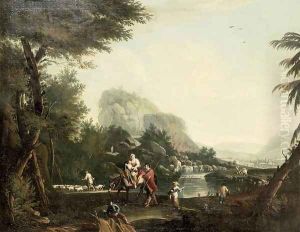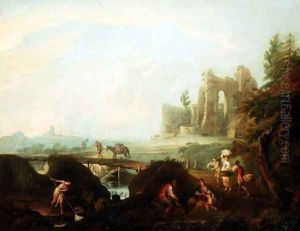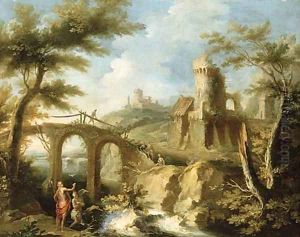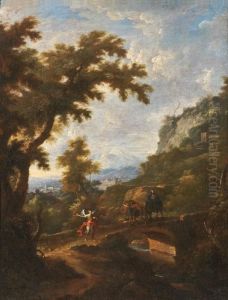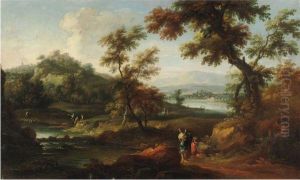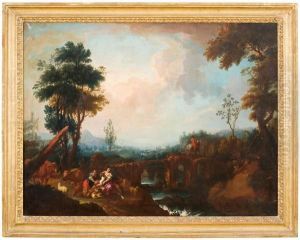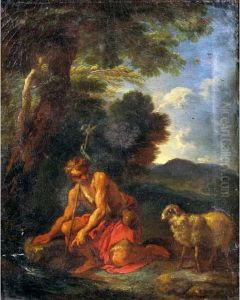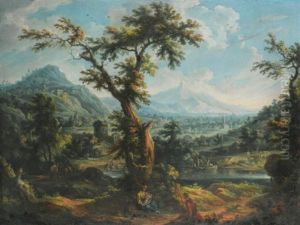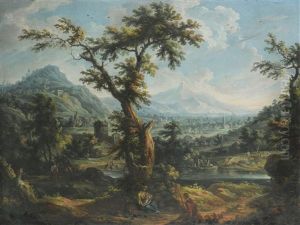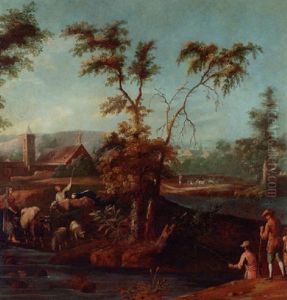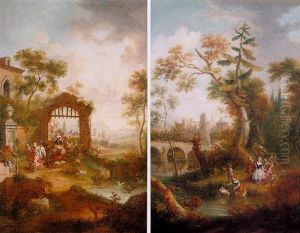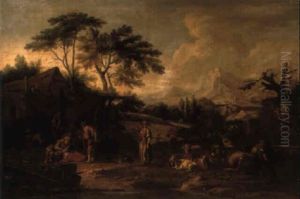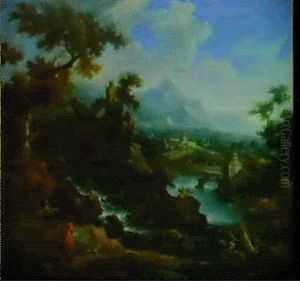Scipione Cignaroli Paintings
Scipione Cignaroli was an Italian painter born in 1706 in Verona, into a family rich with artistic tradition. His career flourished in the 18th century, a period that witnessed the transition from Baroque to Rococo and eventually to the early stages of Neoclassicism. Cignaroli's work, however, remained deeply rooted in the Baroque tradition, emphasizing dramatic effect and emotional intensity, while also incorporating the emerging sensibilities of his time.
Educated in the vibrant artistic atmosphere of Verona, Cignaroli was influenced by the dynamic works of earlier Veronese painters as well as by the Venetian school, known for its mastery of color and light. Despite these influences, Cignaroli developed a distinctive style that was both elegant and expressive, characterized by its refined color palette and meticulous attention to detail. His subjects ranged from religious and mythological scenes to portraits and landscapes, showcasing his versatility as an artist.
Cignaroli enjoyed considerable success during his lifetime, receiving commissions from prominent patrons across Italy. His works were celebrated for their intellectual depth and emotional resonance, appealing to the tastes of both ecclesiastical and secular audiences. Despite his success, Cignaroli remained closely tied to his hometown of Verona, where he contributed significantly to the local artistic landscape.
The legacy of Scipione Cignaroli lies not only in his contributions to the Italian Baroque and the transitions that followed but also in his role in the cultural life of Verona. He died in 1770, leaving behind a body of work that continues to be admired for its beauty and emotional depth. Cignaroli's paintings are preserved in museums and collections around the world, serving as a testament to his enduring influence on the art of the 18th century.
